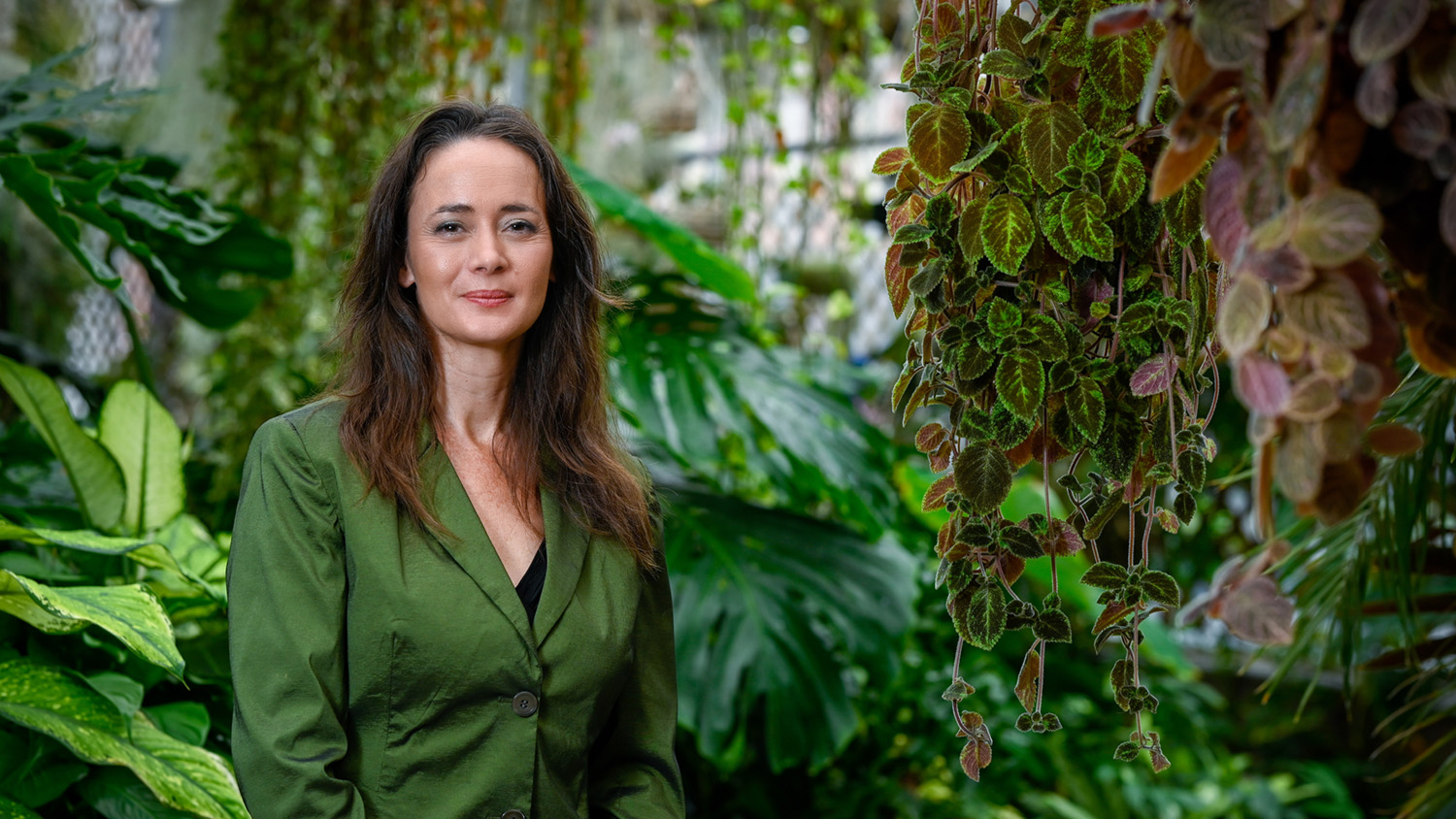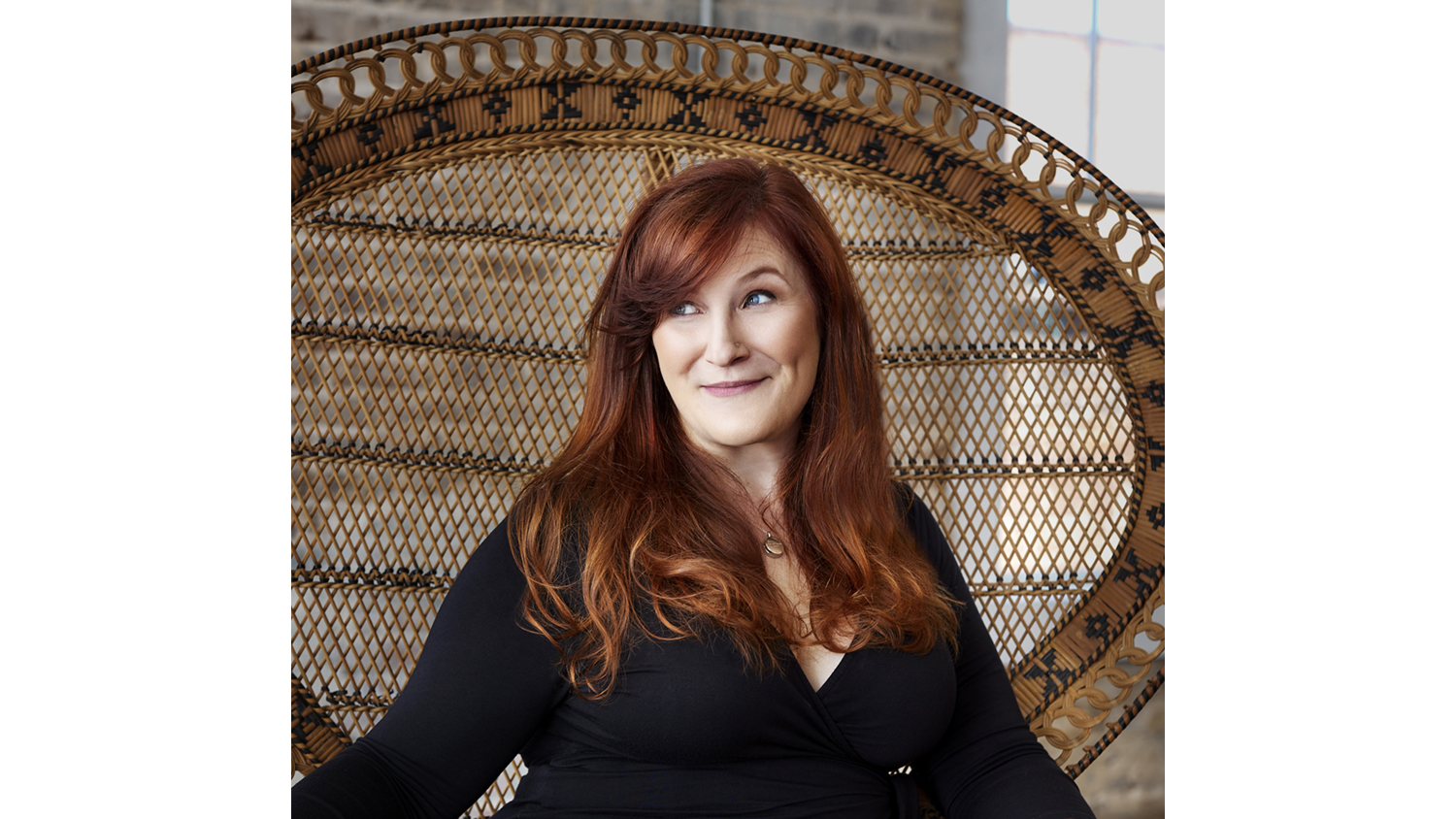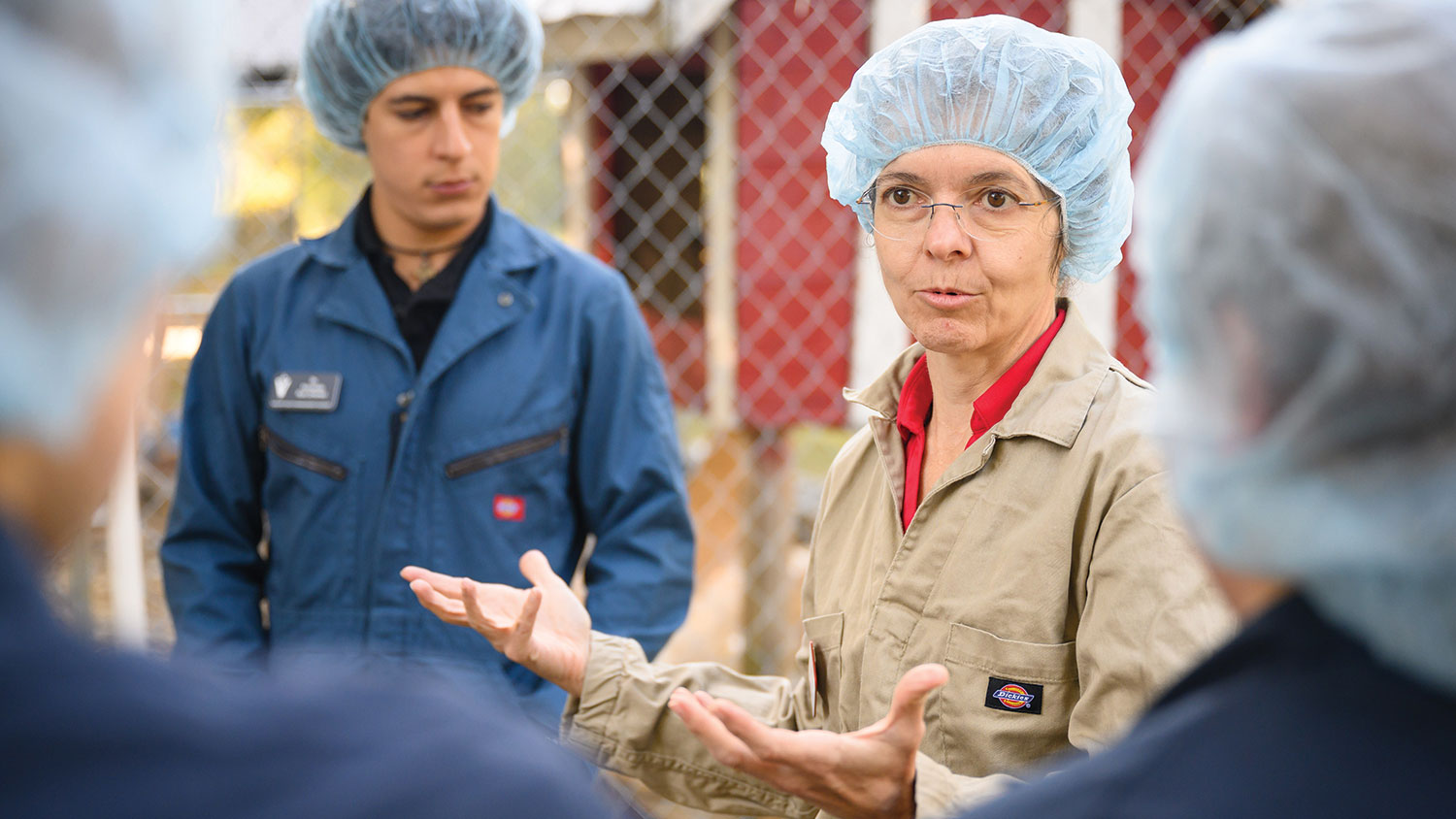Indoor Species
Ph.D. student Vanessa Woods studies the desire people have — or don’t have — to be outdoors.

Vanessa Woods, a PhD student in NC State’s College of Agriculture and Life Sciences, spends a lot of time with puppies. As director of the Puppy Kindergarten at Duke University, Woods helps train young dogs to become service animals. Included in the puppies’ training are outings to improve mental health throughout the campus community, much like the Pause for Paws program at NC State. Seeing how people responded to the dogs’ visits got Woods thinking: “Puppies make people happy, but not everybody can have a puppy. . . How could you scale up [the mental-health benefits of puppies], and is there a substitute in the natural world?”
Those questions led her to research the impact of the natural world on people, where she kept coming across the work of Melinda Knuth, assistant professor of horticultural science at NC State. “She’s really been a leader in this space, in trying to figure out how horticulture affects people’s health and how it affects their stress. And I was just like, Oh my gosh, this is amazing. I want to work with her,” Woods says.
So, for the last two years, Woods, also a journalist, has been studying biophilia, the human desire to be around nature, with Knuth in the Cognitive Behavioral Lab. And soon Woods will add PhD to her growing list of accomplishments: She is the author or coauthor of four books, including Puppy Kindergarten: The New Science of Raising a Great Dog, which has been made into the Netflix documentary series Inside the Mind of a Dog. In 2004 she received the Australiasian Science award for journalism. And in 2022 she was recognized as a Duke University icon, an award which recognizes “kindness, passion, talent or intellect.”
NC State magazine’s associate editor, Staci Kleinmaier, and Woods spoke recently, before Woods was heading to Congo to study how children respond to biodiversity. They discussed how nature may alleviate stress, the differences between dog and cat owners and why Woods chose NC State for her Ph.D.: “NC State is such a leader in terms of horticultural landscape design. Duke just doesn’t have anything like that. I love NC State. I’m total Wolfpack now,” she says.
What is biophilia?
The biophilia hypothesis is the idea that we have an innate attraction to biodiversity and without the natural world, humans will suffer. Biophilia has been of increasing interest as we transition to an urban environment. We’re now pretty much an indoor species. Most Americans spend around 90 percent of their time indoors. There’s a surge in interest in connecting with nature and how nature makes you feel and what access to green spaces means for mental health and well-being.
You call it a hypothesis. Is that because it’s unproven?
Yes, but people talk about it as though it has been proven, and it’s just being assumed that access to nature affects everybody the same way. We’ve found that there’s individual variability in people’s attraction to the natural world. There are some people who are really attracted to nature and cannot live without it. And then there are people who don’t want to have anything to do with it.
What we are particularly interested in is how people react to biodiversity in and around their home, which is a trait we’re calling “backyard biophilia.” How important is it for you to have different kinds of plants and animals around where you live? We found that this is mostly independent of demographic factors, but the lower your income, the more important biodiversity in and around where you live becomes to you. People with household incomes of $25,000 or less were the most likely to report that biodiversity in and around where they live is really important.
Why do you think that is?
We have a couple of hypotheses. One is that biodiversity may alleviate urban distress and the general stress of poverty in some way. Stresses like job insecurity and racial prejudice tend to hit those in a lower socioeconomic bracket hard. Maybe biodiversity alleviates this in some way.
Interestingly, the wealthiest respondents to our survey were more likely to prefer a perfectly manicured lawn; less likely to want a wild, messy garden that invites all sorts of plants and animals; and less likely to enjoy the sounds of animals and insects.
What happens when someone who feels compelled to be around biodiversity is cut off from it?
As we’ve transitioned to a built, urban environment where we’re spending a lot of our time indoors, we have seen a rise in things like cancer, obesity, lung disease. These aren’t only caused by urbanization, but they are linked to it. We know this because when we look at hunter-gatherers, like the Hadza hunter-gatherers in Tanzania, they don’t suffer from cancers or heart disease or lung disease at the same rate that we do. But when they urbanize and start living in cities, the rates of those diseases rise to about the same as their urban counterparts. So the irony is, we spent so much evolutionary time modifying the landscape, making it more livable and increasing our productivity, only to find that our lives are cut short because of it. This is the paradox that we’re dealing with.
What sparked your interest in this research?
I have been in conservation for a long time. I’m also interested in evolutionary anthropology. And I saw a real disconnect in what people were saying was supposed to happen in terms of conservation goals and then what actually happened. Everyone was running around and screaming about how we needed to save species, but then nothing got done. The political will for transformation wasn’t there. And I was like, Why is that? Is it because some people really just don’t care? Understanding that and then also trying to target individuals who do care would make conservation education more effective.
Assessing how different people interact with and are attracted to biodiversity is going to be one of the most important questions that we face in the next few decades. Biodiversity loss is linked to ecosystem collapse and climate change. It is human behavior that needs to change [to prevent this], and how you change human behavior is to start with social psychology.
What has surprised you the most from your research?
We looked at the number of dogs and cats a person has [to see if there was a correlation between pet ownership and biophilia], because domesticated animals are really the only kind of nonhuman species that we interact with a lot.
We were like, Oh, dog owners are probably more bioaffiliate [a term to describe those who desire interaction with the natural world] because they get outside to take care of their dogs. And then, also, [outdoor] cats are really kind of detrimental to a lot of wildlife. But we found that people with dogs are not more bioaffiliate; there was no difference [between them and people who do not own pets]. Cat owners, though, tended to have a higher average of backyard biophilia than either dog owners or non-pet owners. So we can say that cat owners are really bioaffiliate. If you ask me why, I have no idea. [Laughs.]
Dogs seem to be something unique in that we feel like dogs are part of our family. We don’t feel like we’re part of their animal family. They’re like a bridge, but in one direction. We feel like they are one of us, whereas other animals and plants and insects, they’re just still on the other side of that bridge.
- Categories:



Absolutely fascinating! I look forward to reading more about your research in the future.